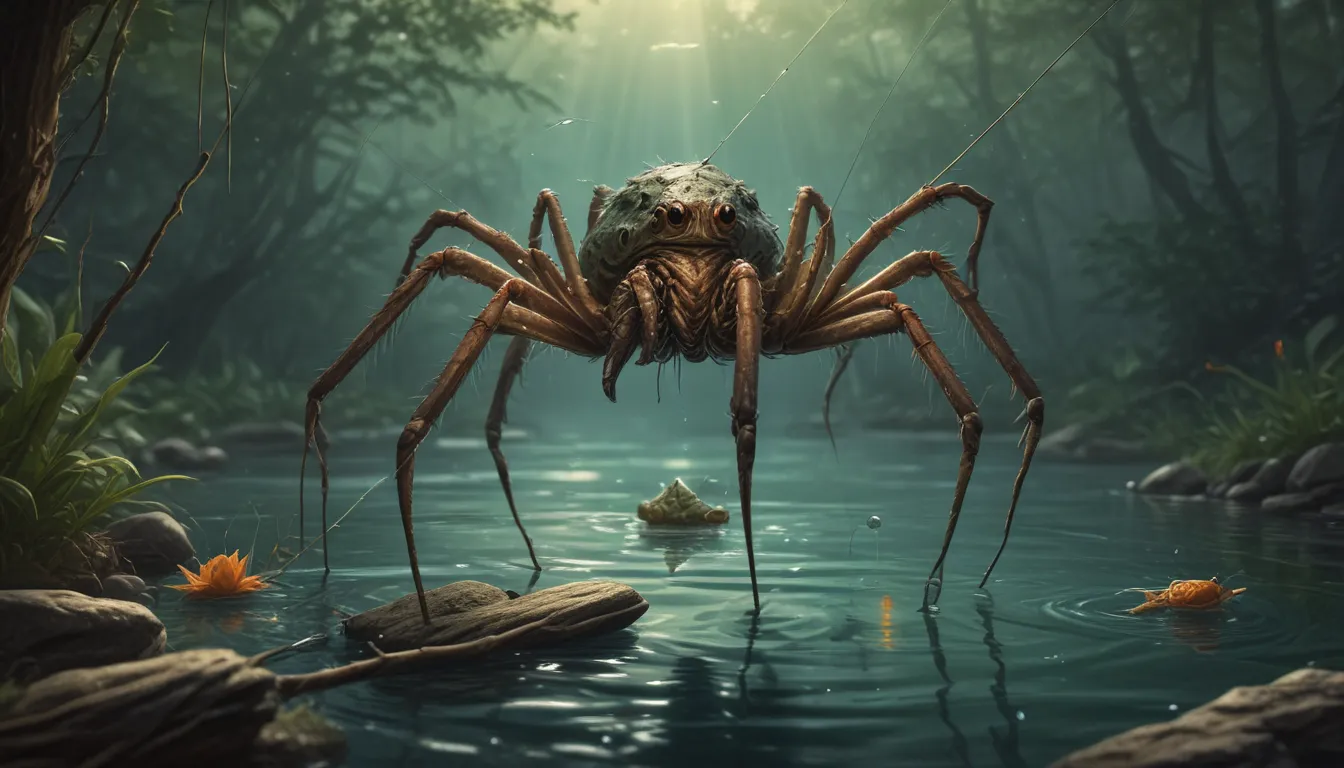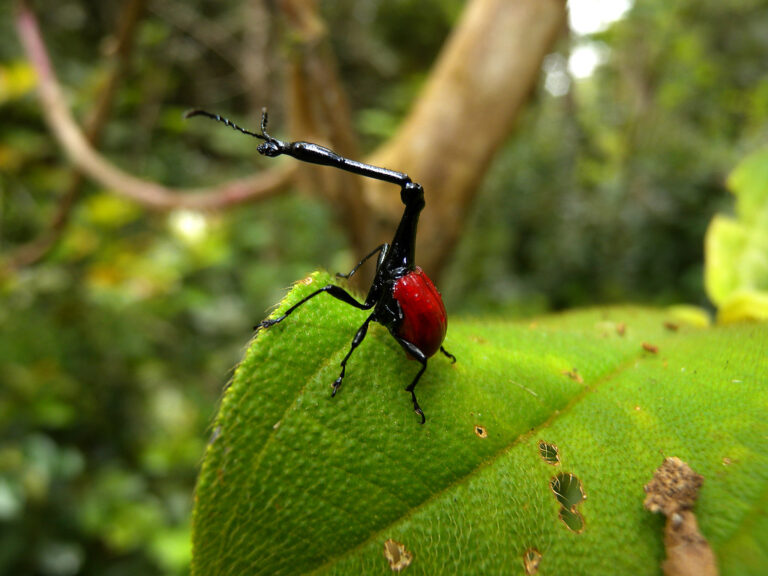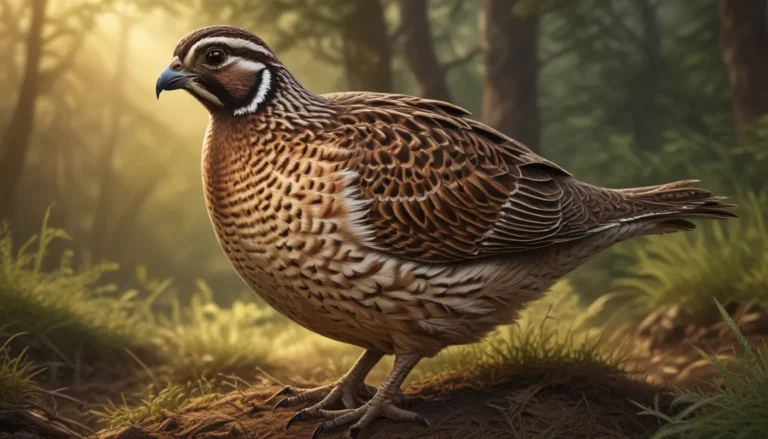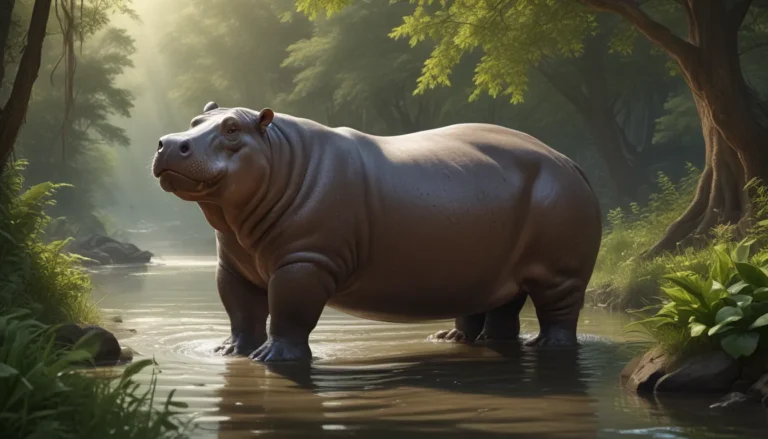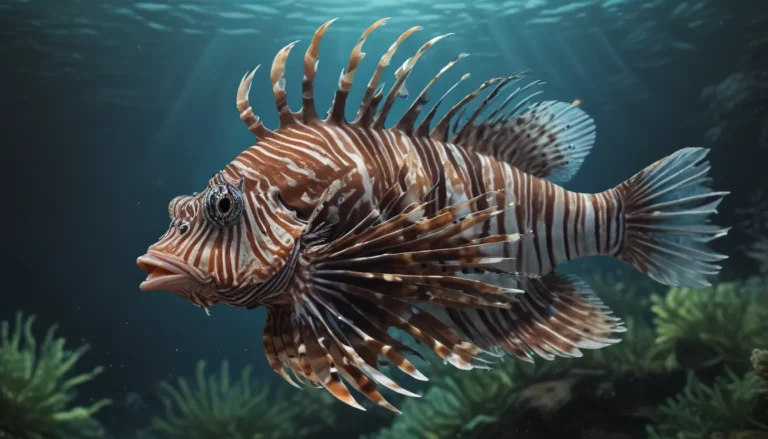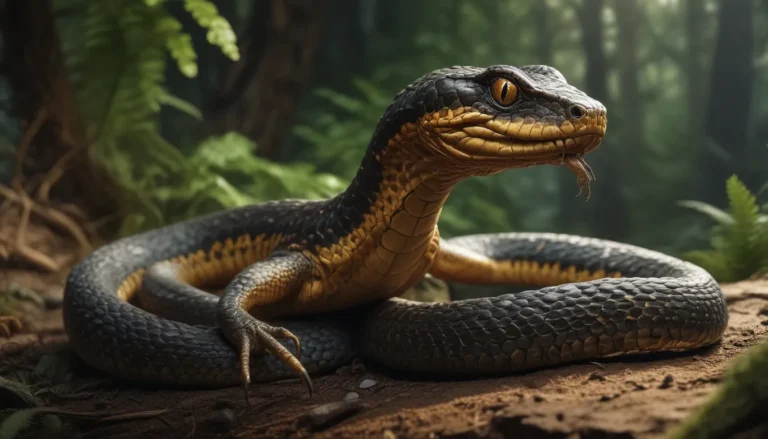The pictures we use in our articles might not show exactly what the words say. We choose these pictures to make you interested in reading more. The pictures work together with the words but don’t take their place. The words still tell you the important facts.
Are you ready to dive into the fascinating world of the fishing spider, also known as Dolomedes? These incredible creatures have captured the attention of nature enthusiasts and arachnologists alike with their unique adaptations and mesmerizing behaviors. From their ability to walk on water to their impressive size and extraordinary hunting techniques, fishing spiders are truly remarkable creatures. Join us as we uncover some extraordinary facts about these arachnids that will leave you in awe of the wonders of the natural world.
The Master of Stealth
The Fishing Spider is a true master of disguise, blending seamlessly with its surroundings to remain undetected by both prey and predators. Resembling dried leaves or pieces of bark, these spiders use their stealth and hunting techniques to thrive in various habitats, playing a crucial role in balancing aquatic ecosystems.
The Aquatic Acrobat
Unlike most spiders, Fishing Spiders are equipped with long legs that allow them to effortlessly glide across the water's surface. They use their legs to paddle and create waves, luring unsuspecting prey into their grasp. These adept hunters can even dive underwater for extended periods, using trapped air bubbles as a makeshift oxygen supply.
From Tiny to Tremendous
One of the most remarkable features of the Fishing Spider is its impressive size. While some species may be just a few centimeters in length, others can boast a leg span of over 12 centimeters, making them among the largest spiders in the world. Their formidable size adds to their intimidating presence in their habitats.
The Art of Fishing
True to their name, Fishing Spiders are exceptional fishermen. Using their specialized front legs to detect vibrations on the water's surface, they swiftly dash across the water to capture their prey with lightning speed. Their venomous fangs paralyze their victims, making them easy pickings for a Spider's meal.
The Ultimate Adapters
Found in a variety of habitats worldwide, Fishing Spiders are incredibly versatile creatures. They can thrive in both aquatic and terrestrial environments, showcasing their adaptability and resilience. This adaptability allows them to maintain their populations in diverse ecosystems.
The Guardian Mothers
In a surprising display of maternal care, female Fishing Spiders lay their eggs in silk sacs and carry them around, attaching the sacs to their spinnerets. They guard and protect their offspring until they hatch, ensuring the survival of the next generation in a harsh world.
Walking on Water
Thanks to the unique structure of their legs, some species of Fishing Spiders can walk on water without sinking. This remarkable ability allows them to traverse vast expanses of open water effortlessly, expanding their hunting grounds and increasing their chances of finding prey.
Balancing Act in Ecosystems
Fishing Spiders play a vital role in maintaining the balance of aquatic ecosystems. By preying on small insects and other invertebrates, they help regulate populations and sustain the health of their habitats. These spiders are an integral part of the delicate web of life in wetland areas.
These extraordinary facts about Fishing Spiders shed light on their incredible abilities and adaptations, highlighting them as truly remarkable creatures in the animal kingdom. Whether it's their stealth, swimming prowess, or unique hunting techniques, these spiders continue to captivate researchers and nature enthusiasts with their fascinating behaviors.
Unveiling More Spider Wonders
As you delve deeper into the world of the fishing spider, consider exploring related species that share similar captivating traits. The striped fishing spider, with its distinct markings and impressive adaptations, offers a new perspective on the wonders of arachnid life. Discover the whitebanded fishing spider, a skilled predator with its own set of surprises waiting to be uncovered. And don't miss the dark fishing spider, a species that thrives in shadowy habitats, revealing even more astonishing characteristics of these fascinating creatures.
Discover More with Us
Our commitment to delivering engaging and trustworthy content drives our dedication to providing valuable insights and information to our readers. Each fact shared on our platform is contributed by real users like you, ensuring a diverse and credible source of knowledge. Our team of editors meticulously reviews each submission to uphold the highest standards of accuracy and authenticity. Trust in our dedication to quality as you embark on a journey of discovery and learning with us.
In conclusion, the fishing spider is a true marvel of nature, showcasing extraordinary abilities that set it apart from other arachnids. With its unique adaptations and behaviors, this remarkable creature thrives in aquatic environments, captivating the curiosity of researchers and nature enthusiasts alike. From its stealthy hunting techniques to its crucial role in ecosystem balance, the fishing spider plays a vital part in the intricate web of life in wetland areas. So, the next time you encounter one of these eight-legged wonders, take a moment to appreciate the magnificence of the fishing spider and its place in the natural world.
FAQs
Q: How do fishing spiders walk on water?
A: Fishing spiders have long, hydrophobic legs that distribute their weight and allow them to walk on the water's surface tension.
Q: Are fishing spiders dangerous to humans?
A: While fishing spiders possess venom, they are generally not a threat to humans and will only bite if they feel threatened.
Q: Can fishing spiders swim?
A: Yes, fishing spiders can swim using their legs as paddles, enabling them to hunt and navigate through water.
Q: What do fishing spiders eat?
A: Fishing spiders primarily feed on insects, small fish, tadpoles, and other aquatic creatures, which they catch using their remarkable hunting techniques.
Q: Where do fishing spiders build their nests?
A: Fishing spiders typically build their nests near the water's edge, constructing a burrow or using vegetation to create a shelter.
Q: How do fishing spiders detect prey in the water?
A: Fishing spiders are equipped with sensitive hairs on their legs that can detect vibrations on the water's surface, helping them locate potential prey.
Q: Do fishing spiders have any predators?
A: Yes, fishing spiders have predators such as birds, lizards, and other larger spiders that feed on them.
Q: Are fishing spiders beneficial to the environment?
A: Yes, fishing spiders play a vital role in ecosystem balance by regulating insect populations and serving as a food source for other animals.
